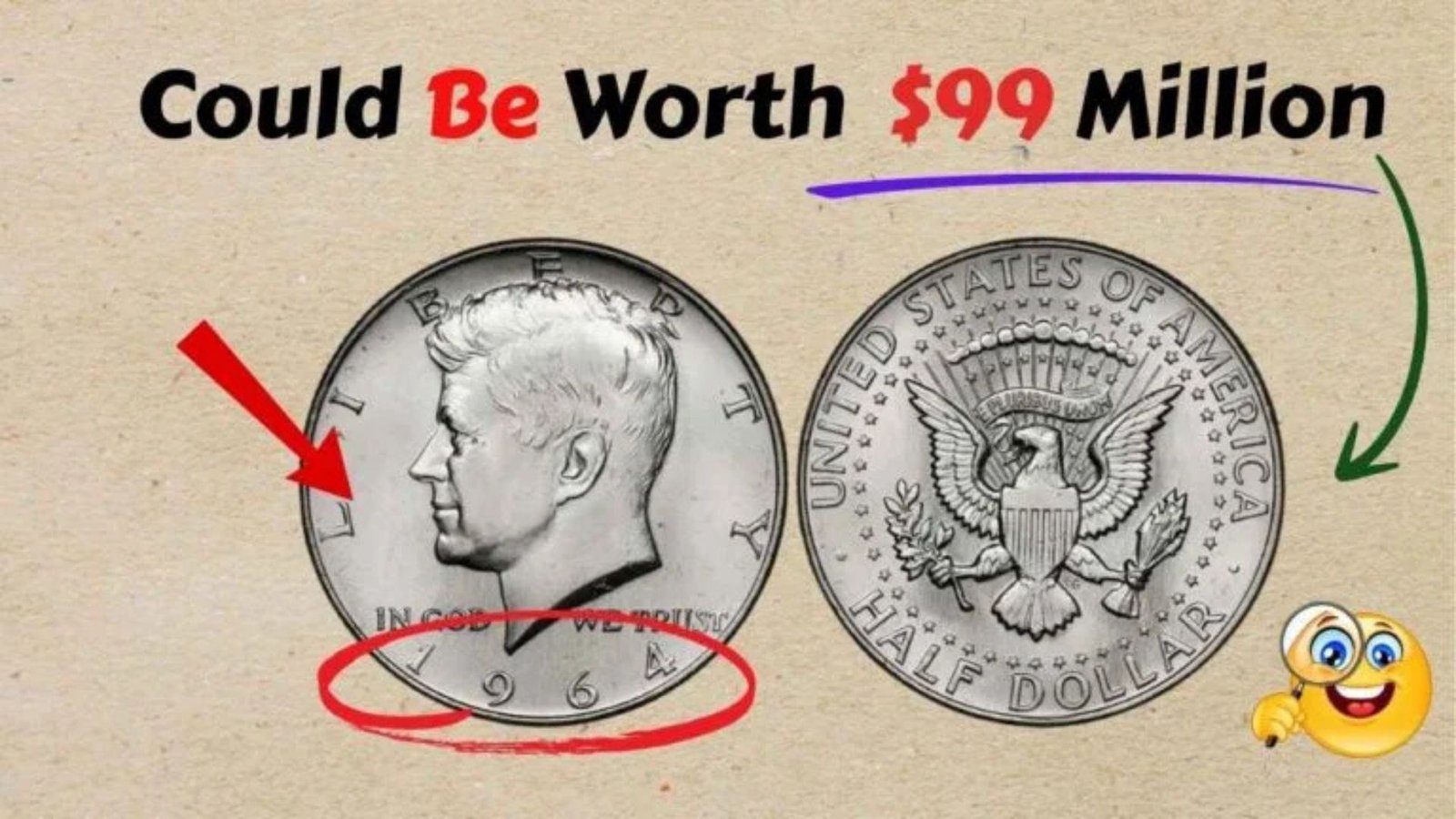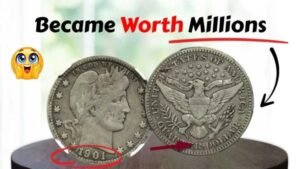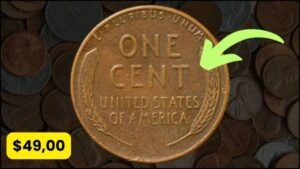The Lincoln Wheat Penny, a small coin with a big history, has captured the imagination of collectors and treasure hunters alike. Rumors swirl about a rare version of this penny valued at an astonishing $99 million, possibly still hiding in circulation. Could you have one in your pocket right now? In this article, we’ll dive into the fascinating world of the Lincoln Wheat Penny, explore its rare variants, their jaw-dropping value, and whether such a treasure could still be out there. Let’s uncover the truth behind this numismatic legend in simple, easy-to-understand words.
What Is the Lincoln Wheat Penny?
The Lincoln Wheat Penny is a U.S. one-cent coin minted from 1909 to 1958. Designed by Victor David Brenner, it features President Abraham Lincoln’s portrait on the front (obverse) and two wheat stalks on the back (reverse), giving it the nickname “Wheat Penny.” This coin is iconic for its historical significance and simple yet elegant design.
While most Wheat Pennies are worth only a few cents, certain rare versions are prized by collectors due to minting errors, low production numbers, or unique features. These rare coins can fetch millions at auctions, fueling the legend of a $99 million Lincoln Wheat Penny.
Why Are Some Lincoln Wheat Pennies So Valuable?
The value of a Lincoln Wheat Penny depends on factors like rarity, condition, and historical significance. Here’s a breakdown of what makes certain pennies worth a fortune:
Key Factors That Drive Value
- Rarity: Some pennies were minted in extremely low quantities, making them hard to find.
- Minting Errors: Mistakes during production, like double-stamping or wrong metal usage, create unique coins.
- Condition: Coins in pristine, uncirculated condition are worth more than worn ones.
- Historical Significance: Certain years or mint marks tie the coin to important events or limited runs.
One of the most famous examples is the 1943 Bronze Lincoln Wheat Penny, struck in error during World War II when pennies were supposed to be made of steel to save copper for the war effort. Only a handful of bronze pennies were mistakenly produced, and one sold for $1.7 million in 2010. Could one be worth $99 million today? Let’s explore.
The $99 Million Penny: Fact or Fiction?
The idea of a $99 million Lincoln Wheat Penny sounds like a dream, but is it real? No Wheat Penny has ever sold for $99 million, but the hype comes from rare coins like the 1943 Bronze Penny or the 1969-S Doubled Die Penny, which have fetched millions at auctions. The $99 million figure may be an exaggeration or a speculative estimate for a flawless, one-of-a-kind specimen in today’s market.
Could such a penny still be in circulation? It’s unlikely but not impossible. Many Wheat Pennies are still found in pocket change, coin rolls, or old collections. The chance of stumbling across a multi-million-dollar penny is slim, but the possibility keeps collectors searching.
Rare Lincoln Wheat Pennies to Look For
Here’s a table of the most valuable Lincoln Wheat Pennies that could make you rich if you find one:
| Year | Mint Mark | Feature/Error | Estimated Value |
|---|---|---|---|
| 1943 | None (Philadelphia) | Bronze (not steel) | Up to $1.7 million |
| 1969-S | San Francisco | Doubled Die Obverse | Up to $2 million |
| 1955 | None (Philadelphia) | Doubled Die Obverse | Up to $125,000 |
| 1909-S | San Francisco | VDB Initials | Up to $100,000 |
| 1944 | None (Philadelphia) | Steel (not copper) | Up to $75,000 |
How to Spot a Valuable Lincoln Wheat Penny
Finding a rare Lincoln Wheat Penny requires knowing what to look for. Here’s a simple guide to help you start your treasure hunt:
Step 1: Check the Date and Mint Mark
Look at the year on the penny. Key years like 1943, 1969, or 1955 are red flags for valuable coins. The mint mark, a small letter below the date, indicates where the coin was made:
- No letter: Philadelphia
- D: Denver
- S: San Francisco
Rare coins often come from specific mints, like the 1909-S or 1969-S pennies.
Step 2: Look for Errors
Check for minting errors like doubled text or unusual metal. For example, a 1943 penny should be silver-colored (steel), so a copper-colored one is a rare error. Use a magnifying glass to inspect for doubled letters or numbers.
Step 3: Assess the Condition
Coins in excellent condition, with sharp details and no wear, are worth more. Avoid cleaning coins, as this can lower their value.
Step 4: Get It Appraised
If you think you’ve found a rare penny, take it to a professional coin dealer or grading service like PCGS or NGC. They can confirm its authenticity and value.
Could a $99 Million Lincoln Wheat Penny Still Be in Circulation?
The odds of finding a Lincoln Wheat Penny worth millions in your change are tiny, but not zero. Wheat Pennies stopped being minted in 1958, so they’re less common in circulation today. However, people still find them in old piggy banks, inherited collections, or even loose change. Here’s why the dream persists:
- Hidden Treasures: Many rare coins were spent or lost decades ago and could still be out there.
- Unrecognized Value: Some people don’t realize they have a valuable coin, so it stays in circulation.
- Collector Excitement: Stories of million-dollar pennies keep the hunt alive.
To increase your chances, check coin rolls from banks, search through old collections, or visit flea markets. You never know where a rare Lincoln Wheat Penny might turn up!
Tips for Collecting Lincoln Wheat Pennies
If you’re inspired to hunt for a valuable Lincoln Wheat Penny, here are some practical tips:
Where to Look
- Coin Rolls: Buy rolls of pennies from banks and search through them.
- Old Collections: Check family heirlooms or estate sales for forgotten coins.
- Metal Detecting: Use a metal detector in old parks or historical sites (with permission).
Tools You’ll Need
- A magnifying glass or loupe to inspect details.
- A coin collecting guidebook to learn about rare pennies.
- A safe storage method, like coin holders, to protect your finds.
Stay Informed
Join coin collecting forums, follow numismatic blogs, or attend coin shows to stay updated on rare pennies and their values.
Conclusion: Is the $99 Million Lincoln Wheat Penny Out There?
The Lincoln Wheat Penny valued at $99 million is likely a myth, but rare versions worth millions do exist. Coins like the 1943 Bronze Penny or 1969-S Doubled Die are collector’s gold, and some could still be hiding in circulation. By learning to spot these treasures and knowing where to look, you might just find a penny worth more than its weight in gold. So, next time you get change, take a closer look—you could be holding a fortune!
Start your treasure hunt today, and who knows? The next Lincoln Wheat Penny you find might just change your life.




